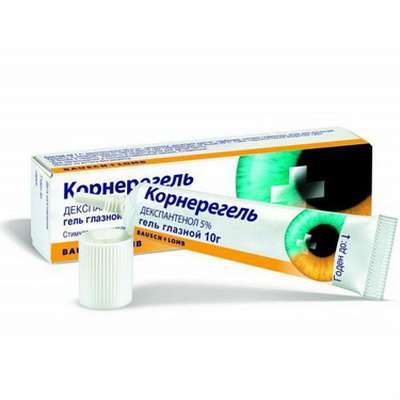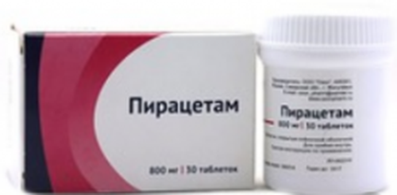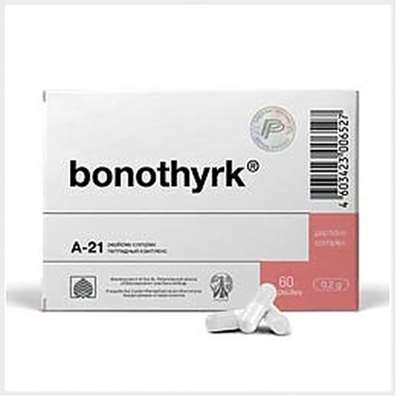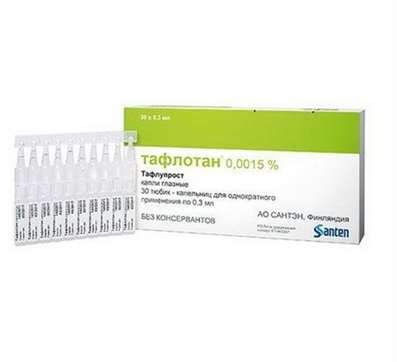Post-traumatic stress disorder
13 Dec 2016
About psychopathological experiences, the biological component of trauma and how to treat post-traumatic stress disorder

When, after heavy experiences people have observed related difficulties, we are talking about post-traumatic stress disorder (PTSD). People can pay attention to what thoughts or memories of the traumatic event burst into their thoughts affect their concentration during the day and appear like dreams at night. There are also day-dreams, and they can seem so real that a person can feel like once again facing the same traumatic experience. Sometimes this is called a re-experiencing psychopathological experience.
Psychopathological experiences
Psychopathological emotions vary widely and depend on the nature of the trauma. People with these emotions usually have the most acute symptoms of PTSD. One of the features of these experiences - intrusive memories and thoughts about his injuries. Patients usually recall the sad events with which they are faced in the past, such as the death of others. In addition, it can be frightening memories, because at the time of receipt of trauma a person usually experiences intense fear.
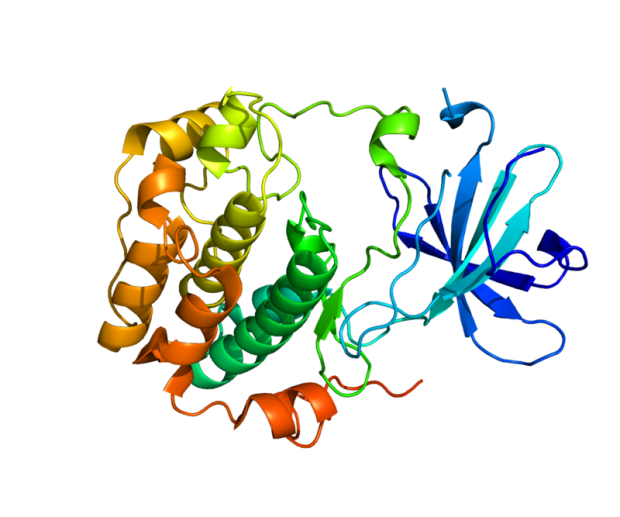
Sometimes memories of the past make people feel guilt, sadness or fear. Even if a person does not remember specifically, but simply faced with something that reminds him of the injury, he begins to feel the strain, anxiety and insecurity. For example, we often notice that the soldiers were coming home from the point of military operations, constant worry and feel uncomfortable in situations that feel vulnerable. They constantly monitor the opening and closing doors and are cautious in crowded places. In addition, the excitation system is activated quickly, they are often tense, irritable, have anxiety attacks happen. They can deal with it, even when you do not think about the injury.
Usually psychopathological experiences are transient and last for one or two minutes. But when a person is experiencing psychopathological experiences, they do not react to external stimuli. However, if you're talking to a man with psychopathological experiences and can engage him in a conversation, you can do it experiences shorter. In addition, there are medicines, such as "Valium", which help people to relax in such situations.
Symptoms and Diagnosis
The main symptoms of post-traumatic stress disorder - is obsessive thoughts about his injuries, hyperexcitation and sometimes shame, guilt. Sometimes people can not experience emotions and behave like robots in everyday life. In other words, people do not feel any emotion or do not feel any particular emotions like pleasure. In addition, they constantly feel that they have to defend themselves, they are in a state of anxiety, they observed some symptoms of depression. These are the main group of symptoms of post-traumatic stress disorder.

It would be nice if there were a biological test that would tell us whether a person has PTSD symptoms without checking. But in general, PTSD is diagnosed by obtaining a detailed history of the patient all that had happened to him, and then study the history of each symptom. You can try Phenibut.
There are several criteria for the diagnosis, and if you watch enough of the symptoms, you can diagnose PTSD. However, there are people whose disorders do not meet the diagnostic criteria, because they have no symptoms, but still have symptoms related to PTSD. Sometimes, even if you do not fully respond diagnostic criteria, you still need help to cope with the current symptoms.
History of research
Interestingly, the researchers, based on the literature, referring to the "Iliad" and other historical sources, have proven that the people at all times aware of that terrible experience people will always respond to a strong emotional reaction. Nevertheless, as a formal diagnosis, the term "post-traumatic stress disorder" appeared only in 1980, that is, quite recently in terms of the history of psychiatry.
During the American Civil War, the Crimean War, the First and Second World Wars, the Korean War, the Vietnam War - all these events at the beginning of the conflict physicists, psychologists or mental health professionals to behave as if they have forgotten all previous experience previous wars. And every time you complete one of them carried out a clinical examination at a level higher for a given historical period.
During the First World War it was carried out a lot of work that was then called trench shock, or traumatic neurosis. US psychiatrist Abram Kardiner has written extensively on this subject, and Sigmund Freud wrote about it at the end of the First World War and during the Second. When people see so many injuries, serious understanding of the phenomenon begins, but, on the other hand, it seems that there is a tendency in society after major traumatic periods of knowledge about trauma and its importance gradually lost.
However, after World War II there was a classic study by Dr. Grinker and Spiegel about the pilots, which can be considered a remarkable description of PTSD. In the late 1950s and early 1960s, a group of psychiatrists has been studying PTSD. Robert J.. Lifton was one of them, as well as my father, Henry Crystal. After that there was a whole group of people, including Matt Friedman, Terry Keane, Dennis Cerny et al., Which worked with the veterans of the Vietnam War, as well as many other researchers from around the world, such as Leo and Lars Eytinger Veyset. This field of research, the problem is relevant in all countries, and in each country there are people who study this phenomenon and contribute to the overall work.
One of the most important researchers of PTSD was Henry Krystal, who passed away last year. He was one of the survivors of Auschwitz, also went through other camps. When he was released from the camp, he decided to go to medical school. Eventually he moved to the US with his aunt, he graduated from medical school, began to study psychiatry and began to work with other survivors of the Nazi death camps. Examining other survivors claiming disability benefits, he carefully studied their cases, and that was one of the earliest descriptions of the syndrome of PTSD. He was a psychoanalyst, so trying to develop therapeutic approaches to the psychoanalytic perspective, which includes elements of behavioral psychology, cognitive neuroscience, and other disciplinary fields that interest him. Thus, he developed some improved therapy to help people with PTSD who have often observed problems with the expression of emotions and feelings.
Classification of trauma
One important outcome of these cultural experiences, as war and other major shocks was the fact that we have begun to expand the assessment of those situations that may lead to injury (trauma in adults, trauma in children, physical or sexual abuse), or situations where the patient is witnessing horrific events, and so on. Such a way of PTSD covers not only social groups such as soldiers in the society, for which PTSD is a significant problem.

What is often misunderstood about PTSD, is the fact that it is not so important, how severe are the events from the perspective of another person. Despite the fact that there are attempts to classify, or in some ways to narrow the set of events that were considered to be really traumatic for individuals causing injury is not so much an objective risk of events as its subjective meaning. For example, there are situations where people are sensitive to what appears to be quite harmless. This usually occurs because people believe that life in the form in which they knew it, was over; something deeply tragic and devastating happened to them, and it is perceived that way, even if other, everything looks different.
It is easy to get lost in the notation, so it is advisable to dilute the concept of PTSD and other types of reactions to stress. But you can imagine, for example, that some people break in a romantic relationship is experienced as the end of life in their familiar form. So, even if the event is not the result of PTSD, doctors have learned to take seriously the impact of such events on people's lives, and they are trying to help them, regardless of whether through a process of adaptation to the new situation they are.
Psychotherapy Treatment
The most common type of treatment for PTSD is, on the one hand, or psychotherapy or psychological counseling, on the other hand, the use of special drugs. Today no one is forcing people who are upset and concerned about the trauma, the traumatic story to tell again and again immediately after a traumatic experience. Previously, however, it is practiced: used equipment "to facilitate trauma» (traumatic debriefing), because it was thought that if I can do so that people told their story, the latter will feel better. But later it was discovered that too much insistence and a boost to the storytelling, as a rule, only intensified the negative memories and reactions to trauma.
Nowadays, there are a number of techniques that are used to very carefully bring people to them about their memories and conversation - counseling or psychotherapeutic techniques that are very useful. Among them, the most reliable and practiced are progressive exposure therapy (progressive exposure therapy), correction of cognitive distortions (cognitive processing therapy) and desensitization eye movement (eye movement desensitization). These therapies have much in common: they all start with the fact that people are taught to relax, because these therapies are effective, it is necessary to be able to relax and be relaxed when working with trauma. Each of them in their own concerns associated with trauma memories, playback injury and the analysis of those aspects of the traumatic situations that people find most difficult.
When progressive exposure therapy begin with memories that is associated with the injury and at the same time is the least painful, and learn to relax and not get frustrated. Then move on to the next point, which is painful, and so on. The correction of cognitive distortions have similar procedures, but, in addition, work is carried out, in which the patient tries to correct wrong ideas, assumptions or conclusions, drawn from a traumatic experience. For example, a woman who was sexually assaulted, may think that all men are dangerous. In fact, only some men are dangerous and traumatic writing ideas in a more adapted context is an important component of the correction of cognitive distortions. Desensitization eye movement, in turn, includes the elements of the other two modes of therapy, and a third component, wherein the therapist diverts patient, causing it to move the finger from one side to the other and to focus on the finger movement back and forth. This focus on the finger, which is not related to the injury, - equipment that helps some people relax during the traumatic memories.
There are also other techniques that are beginning to be explored. For example, there is a therapy based on mindfulness. They are different practices by which people can learn how to relax, and you can control their emotional reactions, as well as many other therapies. At the same time people find it enjoyable and useful. Another common aspect of all of these therapies is that they all contain didactic / educational component.
In the days when post-traumatic stress disorder was not yet clear, people come for treatment, but did not understand what was happening and thought that something was wrong with their heart, intestinal tract or head or something bad happens to them but they did not understand what it is. Lack of understanding was a source of anxiety and problems. So when the doctor explained to these people, that is post-traumatic stress disorder and that the symptoms that have been observed have been quite common and treatable, this understanding has helped people feel better.
Medication Treatment
Currently evidence for psychotherapy more convincing than those supporting the medication. However, there are a few tested medications that have been effective. Both drugs approved for the treatment in the United States, are antidepressant and have a similar mechanism of action. They are of selective serotonin reuptake inhibitors, and one of them is called "sertraline" and the other - "paroxetine".
These standard antidepressant drugs developed for the treatment of depression. They are somewhat affect patients with PTSD and help many of them. There are also many other related products with a relatively proven efficacy. These include inhibitors of the reuptake of serotonin and norepinephrine, as exemplified by the drug "venlafaxine". "Venlafaxine" studied for the treatment of PTSD, as well as several studies conducted earlier generations of antidepressants, such as "desipramine", "Imipramine", "amitriptyline", and monoamine oxidase inhibitors, which are commonly found in Europe and elsewhere.
Certain drugs used in clinical practice, have sufficient theoretical justification for use. These include the second-generation antipsychotic drugs, benzodiazepines, such as "Valium", anticonvulsants, such as "Lamotrignin", and a typical antidepressant "Trazodone," which is often prescribed as a sleeping pill. Such drugs are used to relieve anxiety, irritability, and generally help patients better control their emotions and normalize sleep. In general medication and psychotherapy show similar efficacy. In clinical practice, often one can observe cases where the treatment of patients with severe symptoms of PTSD and use of psychotherapy and medication.
Bank of brain tissue and SGK1
Recently there has been a lot of breakthroughs in the study of PTSD. One of the most exciting of them belongs to Dr. Ronald thinking of Yale University, who worked with the first collection of brain tissue in the area of PTSD. From a medical point of view, if the patient has some problems with the kidneys, it is likely that the doctor is well versed in this, as he had previously studied kidney biology in the context of all the possible renal disease. The doctor will look at kidney cells under a microscope and determine what happens to them.
The same approach has been very effective in some cases, neuropsychiatry: scientists managed to find out a lot about the biology of Alzheimer's disease, schizophrenia and depression as a result of the study of tissue obtained at autopsy. However, the brain tissue samples of patients with PTSD never a collector, as it is quite a narrow field of research.
With the support of the Department of Veterans Affairs in 2016 began the first attempts to gather a collection of brain tissue PTSD, as well as the first study was published based on it, which, as expected, showed that only a part of our understanding of PTSD is true, while the other wrong. Brain tissue PTSD tells about many interesting things, and there is a story that perfectly illustrates it.
When PTSD is disrupted executive control of emotions, that is, our ability to calm down after a collision with something frightening in the environment. Some of the ways that we use in order to reassure themselves are to distraction. For example, when we say, "It's okay, do not worry", frontal cortex of our brain is responsible for the calming effect. The "brain bank" Now there is the fabric of the frontal cortex of PTSD, and Dr. Duman studied mRNA levels in this tissue. MRNA - a gene products encode proteins that our brains are made. It was found that the mRNA level called SGK1 was particularly low in the frontal cortex. SGK1 had never been studied in the field of PTSD, but to a lesser extent related to cortisol - a stress hormone that is released in people during stressful situations.
To understand what may indicate a low level of SGK1, we decided to study the stress, and the first thing we found was the observation that in the brain of animals subjected to stress, decreases the level of SGK1. Our second step, particularly interesting was the statement of the question: "What happens if he SGK1 levels low by itself? Does a low level of SGK1 any meaning? "We brought the animals with low levels of SGK1 in the brain, and they have been very sensitive to stress as if they already have PTSD, although they had never been subjected to stressful influences. Thus, the observation of low SGK1 in PTSD and low SGK1 levels in animals under stress means that low SGK1 make a person more disturbing.
What happens if the increase SGK1 levels? Doctor Doom used a special technique to create such conditions and then to maintain a high level of SGK1. It appears that in this case, the animals not developing PTSD. In other words, they become resistant to stress. This makes it possible to assume that, perhaps, one of the strategies to be followed by the study of PTSD - a search for drugs or other methods, such as exercise, which will be able to raise the level of SGK1.
Alternative research
This brand new strategy of transition from the molecular signals in the brain tissue to the new drug had never been used in PTSD, but has now become feasible. There are many other exciting areas. From the results of the brain scan we will learn about the possible contours of the brain involved in PTSD: these circuits are distorted as they are associated with the symptoms of PTSD (this is recognized by a functional neuro-scannining). From genetic studies we learn about gene variations that affect the sensitivity to stress.
For example, previous studies suggest that the serotonin transporter gene contributed to greater sensitivity to maltreatment of children in early childhood and increases the chances of their PTSD symptoms and depression. Studies of this type are now actively conducted in children and adults, and has recently found another gene that is associated with cortisol, FKBP5, changes which can be related to PTSD.
In particular, there is an interesting example of how biology comes to a new treatment. Currently, in 2016, we are testing a new drug for PTSD, which has been used to treat depression and pain syndromes - the drug ketamine anesthesia. Fifteen or twenty years of research have shown that, when the animals are subject to uncontrolled prolonged stress, over time, they begin to lose their synaptic connections (connections between nerve cells in the brain) in brain circuit competent for the regulation of mood, as well as in some areas responsible for thinking and higher cognitive functions.
One of the questions facing scientists - how to develop a treatment that aims not only to alleviate the symptoms of PTSD, but also in helping the brain restore synaptic connections between nerve cells that contours to effectively regulate mood? And, interestingly enough, Dr. Doom Laboratory found that the application of a single dose of ketamine on the contours of the animal really restore these synapses.
It's an incredible thing - to look through a microscope and actually see how these new "dendritic spines" grow up in an hour or two after a single dose of ketamine. Subsequently ketamine given to people with PTSD, and they showed clinical improvement. This is another exciting area where drugs are being developed not only on the basis of visible symptoms of disease, but in the context of brain circuits. It is a rational, scientific approach.
Thus, from the point of view of biology is now conducted a lot of interesting research, we are working on the study and dissemination of psychotherapy, ongoing research on genetics, and attempts are being made to develop drugs. Much of what is going on, has the potential to change our ideas about things relating to PTSD.

 Cart
Cart

